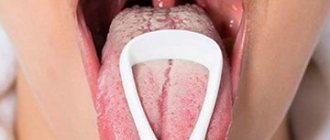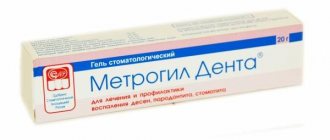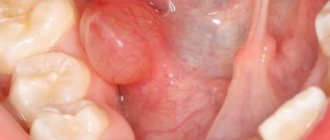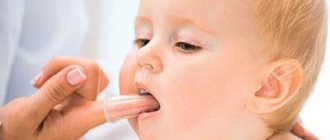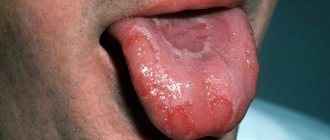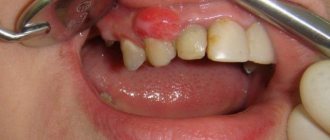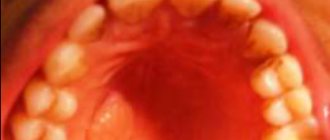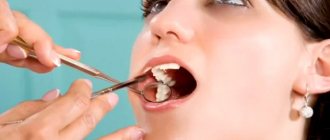What is a bloody pimple in the mouth?
Blood blisters or large pimples can appear anywhere in the mouth Since these pimples are often caused by injury, they may appear on or under the tongue. Thin, blood-filled blisters and pimples also appear on the inside of the cheeks, the walls of the mouth, or the inside of the lip. .
According to the United Kingdom's National Health Service, blood pimples form when fluid collects under broken skin. Depending on the cause, blisters may be filled with blood, clear fluid, or pus.
Some of the causes of injury that lead to a bloody mouth pimple are friction, irritation from chemicals, or a burning sensation in your mouth.
Types of rashes
There are the following types of rashes found on the skin:
- papules and pustules;
- comedones;
- subcutaneous acne.
Papules and pustules are nodular inflamed formations with a blue-red rim and purulent contents in the center. They are very painful and bring their owner considerable discomfort, both physical and aesthetic.
Comedones are relatively small pimples. Inflammation can come from blackheads that clog the sebaceous ducts and cause an inflammatory process.
The most dangerous are internal rashes. In this case, the subcutaneous pimple comes from the inside, but does not break out on its own. This, in turn, can lead to the onset of an infectious process inside, which threatens blood poisoning. Such rashes must be opened.
Bloody pimples are a separate category of acne. Bloody rashes have a bright scarlet, burgundy or bluish color. The inflamed area has dilated vessels filled with blood, as a result of which it acquires its specific shade. It is strictly forbidden to squeeze bloody pimples on the face, as there is a huge risk of causing an infection that will lead to sepsis, namely blood poisoning.
Patients suffering from acne, when such a formation appeared, noted that blood flowed from the pimple for a long time if it was accidentally damaged.
Dermatitis of various types
The formation of blisters of various sizes on the skin and mucous membranes, including in the mouth and on the skin, is one of the signs of diseases belonging to the group of bullous dermatitis.
The risk group includes adult men aged 30 to 40 years; women become infected with pemphigus of the oral mucosa less often. Pemphigus vulgaris of the oral cavity affects children very rarely.
There are 4 forms of oral pemphigus:
- pemphigus vulgaris of the oral cavity - the first sign is the appearance of blisters on the mucous membrane in the oral cavity,
- pemphigus vegetans - symptoms are localized in the groin and armpits,
- seborrheic pemphigus - affects the scalp and face,
- pemphigus foliaceus - the formation of blisters affects the entire surface of the body, but not the oral cavity.
Special mention should be made of Dühring's dermatitis herpetiformis. Similar to pemphigus vulgaris. It is characterized by symptoms such as fever, general weakness and malaise, and itching. Rashes occur on almost any part of the skin of the body, but not on the palms and soles. Sometimes pathology leads to the formation of blisters. They are small and usually filled with clear liquid.
E S T E S T V O KNOWLEDGE
White corpuscles
“The emanation of the nerves is weightless, odorous, invisible, for it is from the spirit. The product of the heart is blood, with all the dimensions of the earth, because when they say it must be felt with the heart, this means it must be applied to the earthly plane.
The only bridge between understanding the spirit and accepting the earth are the white balls. But you know what kind of battle accompanies their existence. Do the white balls, subject to the forces of the earth and carrying the knowledge of the spirit, seem like the White Brothers to you? That is why harmony on earth is so difficult.”
["Illumination", II.I.8]
White blood cells, lymphatic bodies (lymphocytes), lymphoid cells, indifferent educational cells, also phagocytes, micro- and macrophages, or simply leukocytes, are found in the blood.
This is the name given to small colorless bodies of irregular and variable shape found in the blood next to red blood cells, as well as in many other fluids and tissues of the body, which have independent conscious movement. They consist of sticky protoplasm and contain from 1 to 4 nuclei, which, however, become visible only after exposure to water, acetic acid or other reagents.
In addition to blood, these bodies are found in lymph, lymphatic glands, and in general in organs, the basis of which consists of reticular (adenoid) connective tissue, including in the bone marrow, and also, as wandering cells, in various organs of the body: between cells and connective tissue fibers, epithelial cells of glands, mucous membranes, etc.
Their size varies quite greatly: in cold-blooded animals they are smaller than red blood cells; in warm-blooded animals - more; in humans they range from 0.004 to 0.013 mm. M. Schultze distinguished three types of white blood cells in humans: 1) smaller red ones, with a small amount of protoplasm and 1-2 nuclei; 2) equal in size, and 3) large with numerous grains and abundant plasma, characterized by more energetic movement. The same bodies are observed in invertebrate animals.
The number of white blood cells in the blood fluctuates greatly. It depends both on various physiological (normal) and pathological (painful) states of the body, and in different organs of the same organism. On average, there is 1 white blood cell per 335-357 red blood cells; but in the splenic vein (vena lienalis) there are 1 in 60 red ones, and in the splenic artery (arteria lienalis) 1 in 2260. According to occultism, the spleen is directly connected with the subtle world.
“Astral body; the germ, or vital essence, is in the spleen. "Chhaya is coiled in the spleen." It is from this that the astral is formed; he develops a ghostly-foggy, spiral-shaped essence - like a haze, which gradually, as it grows, takes shape" [E.P. Blavatsky, Instructions for Students. Meeting 20].
The number of leukocytes increases during digestion, after bloodletting, with prolonged inflammation, menstruation, during childbirth, with leukemia, from the action of strengthening drugs. On the contrary, with fasting or poor nutrition, their number decreases. In the blood released from the vessels, the number of white globules also quickly decreases, which is also associated with blood clotting, since all three substances from which fibrin is formed occur through the disintegration of white blood globules.
The chemical composition of white blood cells includes several different protein bodies, nuclear nuclein containing nitrogen, sulfur and phosphorus, glycogen, lecithin and extractives. Their formation occurs in all organs based on adenoid (reticular) connective tissue: in the bone marrow, lymphatic glands, spleen, in the mucous membranes of the mammary gland (Thymus) at an early age. Vigorous proliferation of leukocytes is observed during inflammatory processes.
One of the most curious phenomena presented by leukocytes is their independent, intelligent movement. This movement occurs in such a way that at various points on the surface of the leukocyte, protrusions, sometimes thin, sometimes thicker, appear and disappear again, and the contents of the ball gradually seem to flow in a certain direction. The release and retraction of the projections leads to two very important phenomena: the movement of leukocytes from one place to another and the absorption of foreign particles.
In cold-blooded animals, leukocytes travel 1 mm in 2 to 6 hours, while in warm-blooded animals their movement is faster. Their movement is most energetic at a temperature of 35-40°C.
Temperature fluctuations, mechanical and chemical influences also affect their mobility. Interestingly, under the influence of a weak electric current, leukocytes begin to move intensively. Now, if we imagine that a person’s thought causes certain changes in his biofield and generates certain weak electric currents, then the expression that “thought is material” will no longer seem so fantastic. This also explains the fact that a person in “high spirits” or in a prayerful state is more protected from harmful health effects than someone who is sad, tired or overwhelmed by irritation.
For the movement of leukocytes, the presence of oxygen is necessary; if the lack of oxygen lasted a short time, then the life of the white balls is restored when its access is restored; otherwise death follows. Quinine, curare, and iodoform significantly slow down the movement of white blood cells.
The movement of leukocytes occurs with quite significant force; Thus, one can observe that they squeeze through very narrow gaps between the bodies they encounter during movement. The ability to move is also associated with the exit (emigration) of white blood cells from blood vessels. Along the axis of the vessel, blood moves quickly and the leukocytes found here have a spherical shape, while near the wall of the vessel their movement occurs slowly and the leukocytes have an irregular shape; they stick to the wall of the vessel, releasing their processes, and some of them with their processes pierce the thin wall of the vessel, part of the protoplasm of the ball comes out and finally the entire ball ends up lying outside the vessel.
Although some researchers have tried to attribute this phenomenon to blood pressure and filtration, this is not the case—it occurs better with low blood pressure than with high blood pressure. White blood cells come out not through any holes that pre-exist in the wall of the vessel, but directly through the wall of the vessel; the holes thus formed are tightened again immediately following the passage of the ball. In cases of delayed blood circulation in organs due to irritation, a massive release of white blood cells is observed.
The emigration of leukocytes occurs not only from blood vessels, but throughout the mucous membranes of the body. When they emerge on free surfaces, leukocytes also form the so-called mucous and salivary corpuscles. And here I immediately remember the biblical story about the healing of a blind man with the help of his saliva by Christ (whose leukocytes were probably in excellent condition), and the ability of animals to heal wounds by elementary licking. In higher vertebrates (i.e. mammals, birds and reptiles), the release of leukocytes occurs only on the mucous membranes, but in amphibians (Amphibia) and fish they are also observed on the surface of the skin, which is soft and covered with mucus.
Another very interesting phenomenon presented by leukocytes is their absorption of foreign bodies. White blood cells pull foreign objects that enter the body inside and digest them.
In the same way, leukocytes can destroy various unnecessary parts of the body. Mechnikov, who gave the name “phagocytes” (“eating cells”) to leukocytes that absorb foreign bodies, observed that at the time when the tail of a frog tadpole begins to shrink, many leukocytes are noticed in it, absorbing pieces of tissue; Thus, they contain fragments of muscle fibers with preserved transverse striations; the same thing is observed during the transformations of the larvae of many invertebrates: the larval organs, which should be destroyed during the transition of the animal to the adult state, are attacked by phagocytes, which destroy, absorb and digest them.
Phagocytes can also attack bacteria. Thus, leukocytes protect the body from the destructive influence of pathogenic microorganisms that have penetrated it. Moreover, leukocytes have an undeniable attraction to bacteria and look for them themselves. Pathogenic microorganisms that have entered the body can only take over the body if victory remains on their side in the fight against leukocytes. If he is weakened by bad living conditions, overwork, etc., then the ability of his leukocytes to win is reduced.
Bacteria surround us throughout our lives. Our food, drink, and air are filled with them. The outer surface of our body is protected from them, but the mucous membranes provide a convenient place for penetration into the body. Leukocytes that appear on the surface of the mucous membranes serve to protect against them.
Moreover, leukocytes, weakened by the fight against bacteria, are themselves absorbed by their fellows. The benefits of this for the body are obvious. Leukocytes of the mucous membranes are of great importance in human life: thanks to them, life becomes possible in an environment infested with microorganisms. They also perform a plastic role, i.e. some tissue cells can form from them.
Thus, our every thought, every aspiration leaves its imprint on the nuclei of the cells of the physical body. In fact, we can consciously shape our own physical bodies. Gradually, the fabulous images of ancient legends acquire a completely scientific basis.
PS Dear reader, you can send your questions and suggestions about what you read to our e-mail. We will definitely consider them and try to answer you.
contact us 2008
Home Remedies for Bloody Pimples
There are some home remedies that you can try to get rid of blood blisters in your mouth.
- One is to use ice. Placing ice on a bloody pimple or sucking pieces of ice close to the pimple area will compress the blood bubbles, which will stop the bleeding.
- Tea tree oil is an astringent that will reduce pain and dry out blisters, reducing inflammation in the process. Can heal blood blisters because it has anti-inflammatory properties that will also cool the area where it appears and help relieve pain. To use it, you should dilute the oil with water in the proportions of 1 : 1 and rinse your mouth with it.
- Sandalwood powder can be mixed with rose water to make a paste that can be applied to the blood blister. It absorbs heat from the blister so that healing occurs faster. It also helps with inflammation and pain.
- You can also use turmeric paste mixed with rose water or honey. It is an antiseptic and can prevent you from getting an infection.
In the corners of the mouth
Localization in the corners of the lips is typical for:
- injuries – when inserting and removing dentures, the habit of constantly holding a match, pen, etc. in the mouth;
- seizures (angular cheilitis) - small itchy blisters that burst with the formation of painful ulcers and wounds under the crust, which crack again when opening the mouth, which aggravates the condition;
- herpes;
- allergic rash.
The following usually appear on the red border of the lips:
- herpes;
- allergic rash;
- Fordyce granules;
- milium.
The following types of rashes are most often found on the mucous membrane of the lips:
- calluses in infants;
- stomatitis – herpes, bacterial, candidiasis (fungal);
- mucocele.
Wherever the bubble is located, it can signal diabetes, tuberculosis, or the human immunodeficiency virus, and therefore requires vigilance and specialist consultation.
What does it look like?
A blood blister is also called a hematoma, blood blister, or lump.
It is an accumulation of coagulated blood in an organic cavity under the mucous membrane.
On the tongue, a hematoma looks like a swelling, the color of the tongue changes and becomes bluish, and swelling appears.
The patient feels pain and discomfort while eating and talking.
In addition, pinpoint hemorrhages are often observed on the mucous membrane.
The appearance of bloody bumps is a kind of hemorrhage that occurs as a result of injury to the capillaries and thin vessels of the oral mucosa.
We suggest you familiarize yourself with Cracks and peeling in the corners of the mouth: what to do, causes and treatment
Inside the bladder there may be a clear serous fluid without blood impurities, which indicates that the vessels are not intact and have not been damaged. Such hematomas are superficial in nature and the healing process occurs very quickly.
If a hematoma on the tongue contains blood inside, then the injury is deep and its healing period will be much longer until the blood resolves.
Characteristics of a blood bubble on the oral mucosa
The mucous membrane protects the entire body from the negative influence of the environment, from harmful microorganisms, various types of pollution, and also has a fairly high level of regeneration. If blood blisters regularly appear on the oral mucosa, then you should take this signal seriously and take action.
A bloody ball in the mouth is a hematoma (bruise), which is characterized by the accumulation of blood in a certain place in the oral cavity. The appearance of bloody blisters is a kind of hemorrhage that occurs due to trauma to the capillaries and thin vessels of the mucous membrane.
A blister on the mucous membrane may contain clear serous fluid without the presence of blood. This means that the vessels were not damaged and the resulting wound is superficial. Such blisters on the mucous membrane heal much faster. The presence of blood in the bladder indicates a deep injury and a longer period of healing and blood resorption.
How does a blood blister form?
Bloody blisters in the mouth often do not pose a serious threat to human health.
They arise as a result of mechanical damage to the mucosa.
At the moment of microtrauma, harmful microorganisms begin to attack the damaged area.
To destroy them in the body, immune forces begin to activate.
Leukocytes and monocytes, macrophages are immediately sent to the injured area, which suppress the vital activity of microbes and eliminate them.
The level of health of the body is assessed according to the general condition and integrity of the oral mucosa, and only upon examination can a final diagnosis be made.
Since the clinical manifestations of many pathological conditions, including infectious, chronic, bacterial, occur along with a change in the color and integrity of the oral mucosa (tongue, gums). Here it is important to identify the true cause of the blood ball.
Other control methods
To eliminate a specific tumor, it is permissible to use local antibiotics or antiseptics, but only on the recommendation of a specialist. If a pimple of this kind appears has nothing to do with acne, then this kind of treatment can cause irreparable harm.
Before starting therapy, the problem area should be examined by an experienced dermatologist, who, if necessary, may prescribe an additional examination to determine the etiology of the emerging blood tumor.
Any rash on the skin is a signal from the body about the disease. Fluid blisters that appear for no apparent reason indicate an infection or an allergic reaction. This is a serious reason to see a doctor. It is necessary to diagnose the cause of watery rashes and treat them correctly. If the integrity of the vesicle is violated, the focus of inflammation becomes more extensive, and the process of restoring the damaged area of the skin is long and complex.
Mechanical
Injury to the surface of the tongue is caused by all piercing and cutting objects that cause direct and instantly noticeable harm.
For example, dishes with bones cause damage to the oral mucosa during consumption. It is not the amount of food eaten that matters here, but the receipt of microtraumas that violate the integrity of the surface of the tongue.
Blood blisters that form due to mechanical action do not pose any threat to human health. To speed up the process of resorption of seals on the tongue, under it, it is recommended to rinse the mouth more often after eating.
Traditional methods
Traditional methods are good for relieving inflammation and swelling, having antimicrobial properties.
- Aloe or Kalanchoe is an anti-inflammatory agent. Used as lotions. A leaf is cut from the plant, cleaned, and the pulp is applied to the wound.
- Herbal rinse. Chamomile and rose hips disinfect the oral cavity and reduce inflammation.
- Propolis lotions. Soak cotton wool or a cotton pad with liquid propolis and apply it to the site of inflammation.
Before using traditional medicine, you should consult your doctor.
Therapy depends on the etiology of the bubbles and includes the following therapeutic measures:
- The use of antibacterial and disinfectants, antiseptics. The method is used to treat infectious blistering rashes. The drugs have a detrimental effect on the bacteria that cause the formations. Therapy often requires hospitalization.
- The use of drugs that have a local effect to treat injured areas. The products act as a preventive measure against the formation of new formations and eliminate existing elevations.
- Use of anesthetics.
- Treatment of the mucous membrane with a solution of furatsilin, manganese, soda, salt, aimed at local effects. They help eliminate the symptoms of developed inflammation and pain. Many solutions inhibit the activity of staphylococci and streptococci.
- Taking antiviral drugs if the cause of rashes in the mouth is associated with herpes activity. A combination treatment may be prescribed, including not only tablets, but also ointments.
Some patients prefer traditional methods, ignoring medical recommendations. This approach to the treatment of many diseases can lead to complications, since most pathological processes do not go away on their own and require drug therapy. Traditional recipes are recommended to be used in combination with pharmaceuticals, but after consultation with a doctor.
- Rinse your mouth with St. John's wort infusion. The procedure should be performed up to 5 times a day. To prepare the solution, you need to pour a tablespoon of dry St. John's wort into a liter of boiled water.
- Grind the aloe leaves to a paste. The resulting mixture should be applied to the affected areas for 2 minutes once a day.
- Mix apple and garlic juice in equal proportions, then boil it for 5 minutes and take 100 ml orally three times a day.
- Apply a chamomile compress to the affected areas 4 times a day.
- Treat the blisters several times a day with an ointment made from aloe juice, chopped cabbage leaves and egg whites.
We invite you to familiarize yourself with the most effective treatment of periodontal disease at home using folk remedies
You can read how to deal with herpes rash using traditional methods here.
Formations that appear on the inner surface of the cheeks should be treated with caution. They may be filled with blood, so they cannot be injured.
Causes of blisters appearing on the body
Blisters of various types may appear for the following reasons.
- After a skin burn, regardless of its cause - ultraviolet radiation, aggressive chemical or thermal effects. With 2nd degree burns, the blisters are transparent, with 3rd degree they are red due to deep damage to soft tissues along with blood vessels. If after sunbathing exudative elements appear within 6-8 hours, then after burns of other types - within a few minutes.
- Blisters with fluid appear as a reaction to the introduction into the body or exacerbation of the herpes virus with a beautiful name - Varicella-Zoster. In children, this virus often causes chickenpox, but in adults, a rather serious disease is shingles. Typically, blisters have serous contents, but in severe complications, red blisters can be seen on the body. Chickenpox and shingles in this form cannot be treated at home. Since the rash is not only on the surface of the body, but also on the mucous membrane of internal organs, bloody diarrhea, bloody vomiting, nasal and internal bleeding may occur.
- Other types of herpes also cause the appearance of blisters. Whatever the name of the disease and the severity of it, the symptoms are similar - blisters with liquid contents of different sizes, localized on the mucous membrane or on the skin. Typically, such rashes are very itchy; with reflex scratching, erosive lesions form on the skin first and pigmented spots later.
- Fungal infections. Skin lesions with increased activity of pathogenic and conditionally pathogenic microorganisms of this type can be represented by bubbles and spots on the skin of various types and sizes, the colors of the rashes are also different. For example, with tinea versicolor, the color of the spots varies from white to dark brown, and with streptoderma, large blisters are filled with serous fluid with the inclusion of red blood cells, which is why the fluid has a yellow tint.
- Allergy. Redness and blisters on the skin often occur with contact allergies; with food or respiratory allergies, inflamed, swollen spots with red nodules usually appear on the skin. The affected areas itch, itch, and irritation can spread to healthy tissue. For example, if an insect bites the hand of a child under 3 years old, swelling of the larynx may occur within 15 minutes.
- Blisters on the body appear with autoimmune diseases - neurodermatitis, psoriasis or weeping eczema. The exact reasons that cause such irritation of the skin have not yet been fully established.
For whatever reason, blisters appear on the body, they must be eliminated - and preferably - as soon as possible. Papules itch, scratching destroys the integrity of their surface, and erosion wounds form on the skin. Any damage to the skin increases the risk of secondary infection and the development of a purulent-inflammatory process. This is why blisters on the body should be treated as soon as they appear.
Treatment of skin blisters
Whatever causes the blisters, in order to prevent secondary infection, they should be treated with antiseptic, anti-inflammatory and emollient agents. These measures are necessary to avoid the inflammatory process.
To prevent irritated areas of the body and lesions from itching, antihistamines are used in tablets, injections, in the form of ointments and creams. There are many antihistamines: Suprastin, Diphenhydramine, Tavegil can be purchased in tablet or injection form, more modern drugs - Cetrin, Loratadine, Claritin and the like - in tablet form; "Fenistil" in gel form, creams "Medovir" and "Provirsan".
The choice of the form of antihistamine depends on the severity of the disease.
It is advisable to treat blisters from burns with topical agents, the active ingredient of which is dexpanthenol or lidocaine, to eliminate pain. The occurrence of blisters of this type is accompanied not only by severe itching, but also by acute pain.
Small bubbles are not opened, but large damage caused by burns or rubbing must be punctured to reduce the tension of the shell. A thin needle is disinfected, the “operation” site is treated with an antiseptic, and 2-3 punctures are made to remove excess fluid.
Then the antiseptic treatment is repeated, a bandage is applied with Levomekol ointment, synthomycin emulsion or any antimicrobial ointment. After healing, a red spot remains on the skin, which after 1-2 months is compared in color with the surrounding tissues.
Do not open blisters filled with blood yourself. In this case, treatment is carried out on an outpatient basis.
First aid for the occurrence of these harmful neoplasms
It is undesirable to resort to self-medication in case of blisters, but providing first aid to the sick person is simply necessary.
Everyone has soda in their house. The easiest and fastest way to relieve painful sensations in the mouth is to dilute baking soda with water and rinse your mouth. It is useful to rinse your mouth with a herbal decoction.
For example, Maalox will help relieve pain for a short time. It is prescribed for other purposes, but this drug causes numbness in the mouth and has an analgesic effect.
Treatment of a bump on the cheek
Any neoplasm on the cheek from the inside interferes with chewing and is constantly injured. The patient is indicated for surgical treatment to relieve discomfort and prevent cancer. Removal is carried out in several ways:
- cryodestruction – destruction of neoplasms using low temperatures (liquid nitrogen);
- sclerotherapy - the introduction of a drug into a vessel that causes the walls to stick together and then resolve;
- laser – layer-by-layer removal of the cyst and its contents with a laser scalpel;
- radio wave method - removal of high-frequency radio waves by a beam;
- surgical excision with a scalpel.
If the cause of the tumor was a viral infection, surgical methods are supplemented with antiviral drug therapy. Sometimes folk remedies help, but they cannot cope with the cause of the disease.
Medicines
The development of a tumor on the mucous membrane, which is viral in nature, is treated with interferon-based drugs. They help the body cope with the disease and have a general strengthening effect.
- These drugs include: Viferon, Intron, Altevir, Roferon.
- Taking vitamins is indicated, antiviral treatment is carried out with Lavomax, Cycloferon and others.
- To stop tumor growth, cytostatics may be prescribed.
Hot and cold compresses cannot be used to treat growths: they can worsen the situation and contribute to the exacerbation of the disease. For home remedies, you can try applications with castor oil; it is recommended to repeat them twice a day. It is also suggested to wipe the growth with a cut clove of garlic, but in the case of an ulcer or erosion, such treatment is more likely to harm.
Rinse
Rinsing is useful only at the initial stage, after biting or the appearance of a small dense area.
- A decoction of oak bark will help you cope with inflammation and defeat infection. You should rinse your mouth at least 7 times a day for a week.
- Pine needles will also help. They need to be crushed, steamed in a thermos and used after brushing your teeth.
The reasons for the appearance of blood blisters in the mouth, on the lip, cheek, and tongue?
Poll: When did your acne appear? (Qty: 4295)
I've been suffering all my life
It's been a couple of years now
About a few months
Recently
To answer, click on the desired answer option. results
- Trauma: Trauma appears to be a common cause of bloody pimples in the mouth, tongue, or lip. Injuries are usually caused by pinching, impact, or friction. However, they can also be the result of burns and frostbite. The bottom line is that trauma damages the tissue underneath. skin without disturbing its structure. There are many factors that can cause injury to the mouth, tongue, lips or cheeks, which leads to the formation of blood blisters in the mouth. The most common of them are:
- Frictional injury: Sometimes when you chew food, your teeth can rub against the inside of your cheek or lips, causing friction that can cause irritation. If this friction happens constantly, then it can cause injuries that lead to blisters and blood pimples during inner cheeks or inner lips Friction can affect the inner right cheek, inner left cheek or both Similarly, such actions can affect the appearance of blood pimples on the inner upper or lower lip It all depends on the structure and arrangement of the organs of the mouth and the coordination of them movements when you chew food or talk. The situation may likely be worse in people with bleeding gums or sharp teeth, which can also produce this friction. Friction can also result from chewing hard, rough-textured foods.
- Hot foods: If you consume too much hot food or drinks, including coffee or tea, you can burn your delicate linings on your cheeks and tongue. Damage caused by burns may show up as blood blisters forming in the affected area in the mouth. Blood pimples usually appear around two days after receiving burns.
- Frostbite: If you live in a very cold region, you may be susceptible to frostbite on your cheeks or lips. Frostbite can lead to injuries in the mouth, which can cause blood blisters to appear on the gums, cheeks and lips, or on the inside of the cheeks or lips. These blood blisters usually appear two days after frostbite Frostbite can be caused by both flat blood blisters and blisters with increased blood content.
- Impact Forceful contact is also a common cause of injury to the mouth, inner cheeks and tongue. You may accidentally hit your lips, cheek or jaw against an object while moving, or bite your tongue hard.
We invite you to familiarize yourself with Ointments and gels for stomatitis in the mouth: review and rating of the best products
Causes
Often, papules can become inflamed, which greatly aggravates the overall clinical picture. In appearance, this neoplasm resembles an internal pimple, which has a purple-bloody coloring - a rather unpleasant sight, especially for people who are far from medicine.
When a bloody pimple appears on the skin, the first thing you need to do is immediately consult a doctor, who will carry out a series of diagnostic measures to find out the true nature of the bloody pimple.
Modern doctors describe a number of reasons why papules appear on the skin:
- improper functioning of the digestive system;
- hormonal imbalances;
- poor nutrition;
- pathological processes in the liver;
- abuse of bad habits;
- emotional overstrain, stress, prolonged depression.
Many people mistake bloody pimples for an allergic rash, but these neoplasms cannot occur against the background of external irritants.
Regarding the occurrence of hemangiomas on the skin, which can also resemble small bloody pimples, in this case it is necessary to follow a number of important rules.
Firstly, this neoplasm should never be pierced or tried to be squeezed out, as this can lead to unpredictable consequences.
Secondly, the hemangioma can grow in size, so it would be wiser to consult a doctor about getting rid of this skin pathology.
Causes of lumps in the mouth
The effectiveness of treating a lump on the lip depends on the correct and timely diagnosis of the disease. After the examination, the specialist determines the nature of the origin of the growth, the degree of damage, and only after this a treatment regimen for the disease and a prognosis for the speed of recovery are drawn up. The main reasons for the appearance of the ball are viral infection and mechanical trauma to the surface of the oral mucosa.
Often, experts note complaints that the patient has bitten his lip, and a growth forms at the site of the incision; this formation has another name - a mucocele cyst (or mucous cyst). This formation is characterized by a cavity in which salivary fluid accumulates. Due to damage to the salivary ducts, the secretion is not removed, which leads to the appearance of mobile, painless edema. The surface of the mucous cyst is blue, and the diameter varies from 2 to 10 mm (see photo).
Complications and prevention
Formations in the oral cavity are a sign of a serious health problem. Therefore, if the condition does not improve within 24-48 hours, you must urgently contact your local physician, who will determine the cause of this symptom and refer you to the right specialist.
Delay in providing medical care can lead to the spread of the inflammatory process into the subcutaneous fatty tissue of the neck, lymph nodes of the oropharynx and lower jaw.
Prevention is the best treatment for any disease, so using only washed vegetables and fruits, cleaning the mouth from food debris after eating, brushing your teeth and rinsing your mouth 2 times a day will significantly reduce the risk of inflammatory processes.
Unfortunately, there are no special measures to prevent pharyngitis.
What you can do is to protect yourself from infection (virus or bacteria):
- wash your hands frequently;
- rinse your nose with saline solution (or solutions such as Tonimer, Quicks);
- gargle with solutions of chamomile, soda (2%);
- avoid crowded places when respiratory infections are raging - for example, a clinic, if your question is not vital and can wait (preventive examination). If a visit cannot be avoided, you can smear your nose (inside) with Oxaline ointment before leaving the house or wear a protective mask. Upon returning home, be sure to follow steps 1 and 2.
- ventilate the premises as often as possible - leave the windows open for 5-7 minutes every 45 minutes. This advice applies more to offices, kindergartens, and schools.
For general strengthening of the body:
- eat right - vegetables, fruits, dairy products, meat;
- drink plenty of fluids (up to 2 liters);
- avoid stressful situations;
Be healthy!
Symptoms of bubbles in the mouth with photos
Blood balls or blisters in the mouth are a symptom of the diseases that lead to their appearance. Sometimes formations are visible in a regular mirror. Groups of small whitish or transparent blisters appear in the mouth, and a white or yellowish coating forms on the affected area, but sometimes you can find that a single large bloody blister has appeared inside the cheek or lower lip.
READ ALSO: what to do if a blister pops up on your lip?
You can see what a blood bubble in the mouth looks like in the photo accompanying the article. In addition to vesicles, symptoms are noted:
- feeling of dry mouth,
- slight swelling of the affected tissues,
- there is discomfort while eating,
- itching, pain, tingling and/or burning are felt in the oral cavity.
Treatment of bloody blisters in the mouth
A blood blister in the mouth is only part of the body’s defense reaction and goes away on its own within a week. If this does not happen, then you should consult a doctor to rule out serious diseases of the body and neoplasms. He will be able to make an accurate diagnosis after a thorough examination, studying the data of clinical tests and histology. After this, the doctor will prescribe the correct treatment.
- volume of surface damage;
- degree of filling with serous fluid;
- the nature of the contents of the blood bladder;
- location.
The volume and nature of the damaged surface is important when prescribing treatment for a bloody blister in the oral cavity. After all, the larger the volume of the blood bladder, the worse it heals and resolves. Treatment of a large bladder with blood can develop from conservative treatment into surgical intervention. Small blood blisters resolve quickly and do not require special treatment.
A blood blister on the oral mucosa must be carefully examined to exclude hemangioma and vascular tumor. A doctor can do this when examining the oral cavity. Hemangioma is sometimes left without much treatment if it does not grow. If it grows rapidly, it should be removed surgically.
Many bloody blisters in the mouth can be associated with syphilis, sometimes pemphigus. Small red blisters on, under, or on the side of the tongue may indicate the presence of glossitis, an inflammation of the surface of the tongue caused by harmful microorganisms. Treatment will consist of treating and rinsing the mouth with antiseptic solutions and eliminating the disease, which was the main cause of the appearance of blood blisters.
It is not necessary to treat a bloody blister in the mouth if it is isolated and does not bother the person. If it interferes, the doctor performs a puncture after a thorough examination and diagnosis.
To strengthen the walls of blood vessels and the immune system, vitamins E, A, C, K, B vitamins, and multivitamin complexes are prescribed.
The appearance of bloody blisters in the mouth indicates an oral injury or is a symptom of a disease in the body. Only a doctor can establish the true cause of this formation and prescribe effective treatment. If you seek qualified help in time, this disease will not cause discomfort and will not lead to serious consequences.
Thermal
Such damage includes microtraumas resulting from drinking too hot tea or coffee.
The duration of wound healing from thermal exposure directly depends on the depth of the lesion; they take quite a long time to heal.
Depending on the degree of damage, sensations change:
- In the first degree, the burn occurs only on the outer layer of the tongue. A person experiences pain, the color of the tongue changes to red and after some time begins to swell. Rinsing the mouth with antiseptic solutions will help speed up the healing process.
- In the second degree, the sensations become more painful, since not only the outer but also the inner layer of the tongue is affected. The formation of blood blisters, swelling of the tongue and its redness are also observed. In this case, it is recommended to seek medical help as soon as possible so that the doctor removes the lump, washes the affected area and treats it with an antiseptic.
- In the third degree, the burn penetrates deep into the tongue, the burned surface becomes black. The patient complains of a feeling of numbness of the tongue and severe pain. The help of a doctor is mandatory here, otherwise there is a high probability of death.
Blood ball in the mouth: what is it and what to do with it
The oral mucosa is an important component of the human body, which consists of different tissues that perform protective, absorption and excretory functions. It is involved in thermoregulation and is responsible for the perception of the taste of food. Therefore, it is necessary to carefully monitor the condition of the oral mucosa and, if there are changes in the integrity of the epithelium, consult a doctor.
- Determine the appearance of the formation.
- Guess the time of its occurrence.
- Suggest the reason for its occurrence.
- Treat the oral cavity with local antiseptic preparations 4-5 times a day.
- After 12-16 hours, evaluate the effect of antiseptics, and if the result is positive, continue treatment. If the result is negative, seek medical help.
Any lesions of the mucous membranes cannot be ignored - they may indicate the development of serious pathologies in the body. In addition, such phenomena are always accompanied by discomfort and pain of varying degrees of intensity. The appearance of a transparent blood bubble or formation similar to “calluses” on the cheek, inner sides of the lips or gums is a clear example of pathology of the oral mucosa.
Traditional methods
Aphthous stomatitis of the cheeks, tongue, and palate is treated comprehensively. The oral cavity must be regularly rinsed with antiseptic solutions of Chlorhexidine and Furacilin. In addition, pain-relieving gels are used – Dentinox, Dentol. The general treatment course must include antiallergic drugs (Suprastin, Diazolin, Claritin).
Bitten lip (cheek) - an injury that leads to the appearance of tubercles on the mucous membrane
To treat herpetic stomatitis, systemic antiviral medications are used - Ergoferon, Kagocel, Arbidol. Pemphigus is a complex disease of unknown etiology and most experts are inclined to believe that it is autoimmune in nature. Therefore, most often (at least during an exacerbation) it is treated with hormonal drugs in a hospital setting.
Features of treatment of blisters on the inside of the cheek
Epidermolysis congenita (congenital pemphigus) is the most common cause of blisters on the inside of the cheek. Usually it accompanies a person throughout his life, and treatment is carried out only during exacerbation of the disease.
Severe disease requires the use of corticosteroids. But any treatment is prescribed exclusively by the attending physician. Treating the disease yourself is dangerous.
Treatment of pemphigus should be accompanied by proper nutrition and a salt-free diet. It is necessary to regularly rinse the mouth with anesthetics.
What not to do?
If you have blood blisters, you should not:
- Pierce and burst them yourself. This technique will only worsen the situation; as a result of additional injury, a fungal infection will join the existing problem, which will prolong the disease.
- Ignore the hematoma, lump, or clot that appears in the oral cavity. If there are any changes in the mucous membrane of the tongue, gums, palate, or cheeks, it is recommended to contact a qualified specialist who will identify the true cause of the disease and prescribe an appropriate treatment regimen.
How to remove blood spots on the body?
Only a qualified professional should make the decision to remove or leave red dots. In some cases, simple hemangiomas are cauterized with carbon dioxide, X-rays, or surgically removed. Doctors do not recommend self-medication so as not to worsen the condition.
Regardless of whether red dots on the body bother you or not, you should trust only a specialist who has the right to make a diagnosis, prescribe treatment and diet. Seek advice from professionals.

